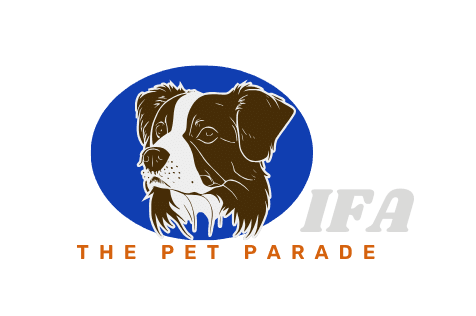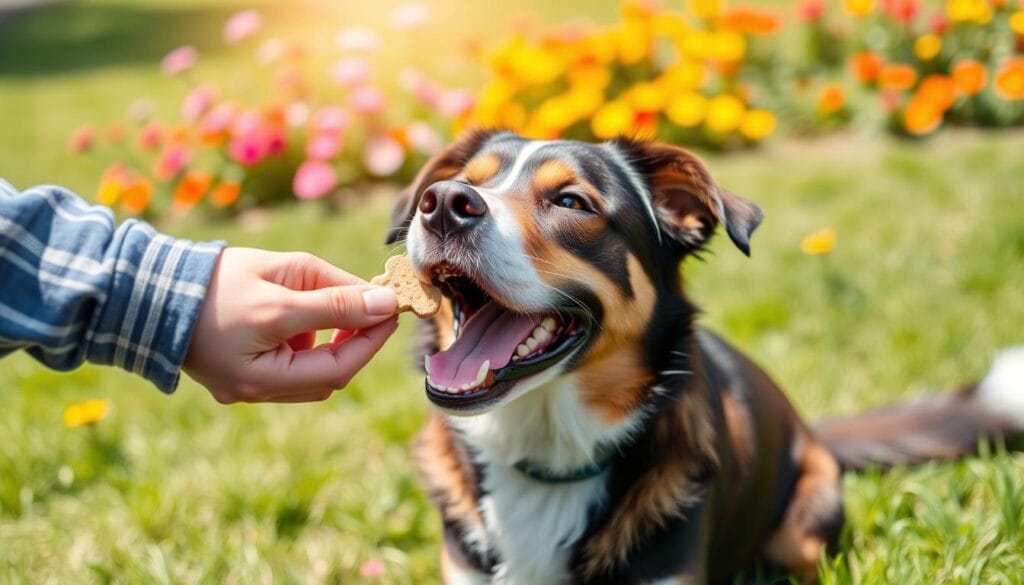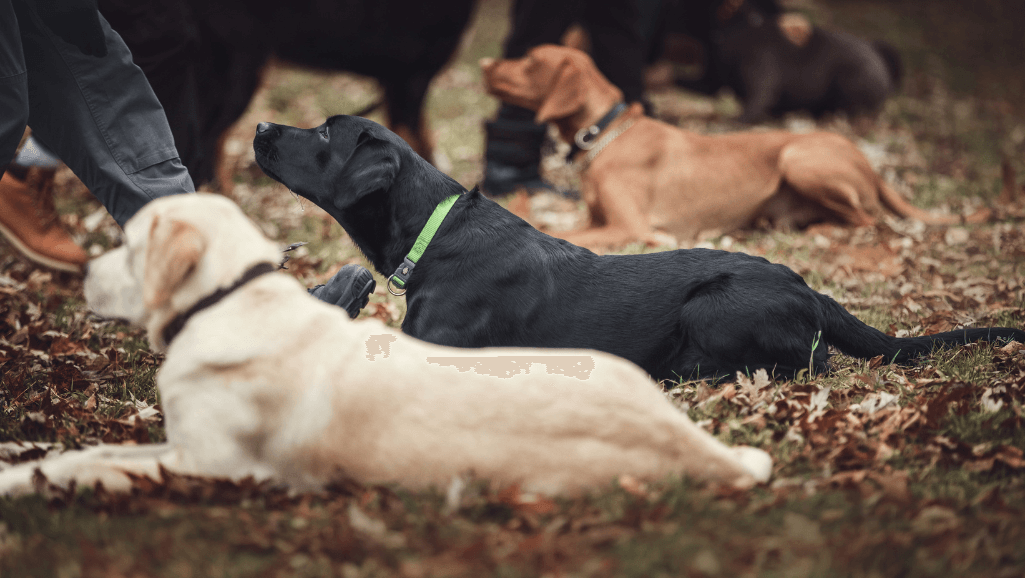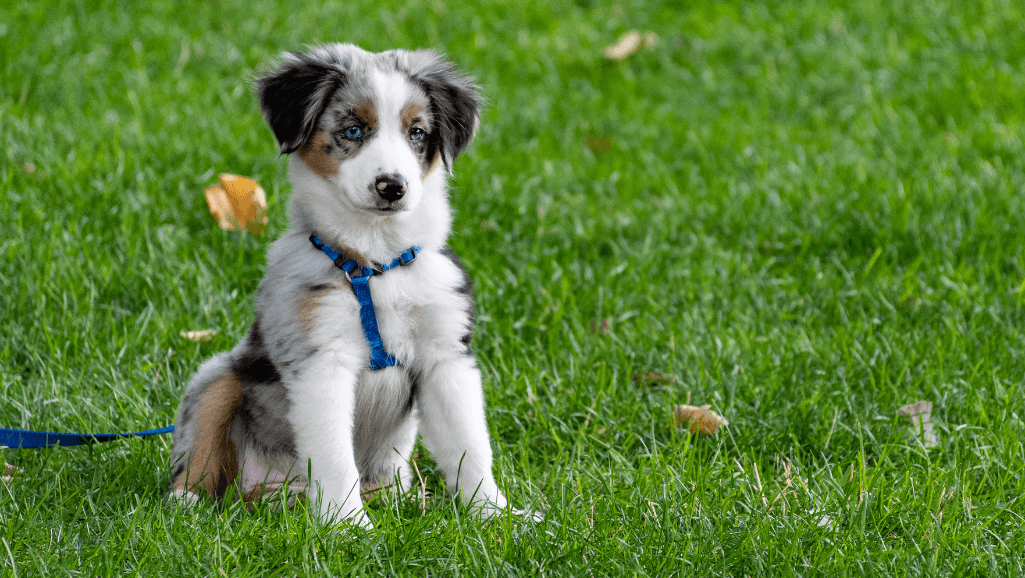Having a dog brings joy and companionship. But it also means we must ensure they behave well and are part of the family. Finding the right dog training can be tough, with many different methods and unproven ideas. This guide offers expert advice and proven techniques to help your dog become well-behaved.
Positive reinforcement training is key, as it teaches and reinforces good behaviors. Every dog is different, so what works for one may not work for another. Consistency is also important, as dogs learn from repeated cues. The advice here comes from over 20 years of experience from certified professionals in the field.
Key Takeaways
- Employ positive reinforcement as a key technique in teaching desirable behaviors.
- Recognize that individual dogs have unique motivators and tailor rewards according.
- Consistency in commands and reactions is key to help dogs understand expected behaviors.
- Consider a dog’s perspective and emotional state when troubleshooting training challenges.
- Engage and interest your dog during training to maintain their focus and enhance learning.
- Seek professional guidance through resources like the AKC GoodDog! Helpline or certified trainers.
- Understand that well-trained dogs are less likely to be surrendered and exhibit behavioral issues.
Understanding the Basics of Dog Training
Starting dog training is more than just teaching tricks. It’s about creating a lifelong bond with your pet. Early puppy obedience training and dog behavior modification are key to a happy, well-behaved pet.
The Importance of Early Training
Teaching good habits early is vital for both you and your dog. Early training can prevent bad behaviors like barking and jumping. It helps puppies learn commands and react better to everyday things.
Being consistent in these early days helps puppies understand what’s expected of them. This is key for effective dog training.
Common Behavioral Problems
Behavioral issues in dogs often come from misunderstandings. Using specific dog behavior modification techniques is essential. Training sessions focused on problems like aggression and anxiety can greatly improve a dog’s behavior.
Using positive reinforcement and gentle corrections can make a big difference. It leads to better behavior in your dog.
Establishing a Training Routine
A regular training routine is vital for keeping behaviors strong. Even a few minutes of training each day can improve obedience. Structured sessions with commands practiced in different situations reinforce learning.
Putting commands into daily life helps your dog learn and apply them. This daily commitment creates a stable, positive environment for your dog to grow and thrive.
Understanding and starting with these basic training steps is essential. They help build a positive, respectful relationship with your dog. These steps are not just for puppy obedience training. They also make dog behavior modification easier, leading to a well-adjusted, friendly dog.
Choosing the Right Training Method
Choosing the right behavioral training for dogs is key to their learning and behavior. There are many training techniques, each with its own way of handling dog behavior. Knowing these methods helps dog owners pick the best training for their pet’s personality and needs.
Positive Reinforcement vs. Negative Reinforcement
Positive reinforcement dog training rewards good behavior to encourage it more. It uses treats, praise, and play to build a positive bond between dog and trainer. On the other hand, negative reinforcement removes something unwanted to encourage a behavior. It’s important to know these to use the most humane and effective training for your dog.
Clicker Training Fundamentals
Clicker training is a type of positive reinforcement dog training. It uses a sound to mark good behavior and then rewards it. This method is precise and helps dogs learn quickly. It’s not the only way, but it’s clear and consistent.
Comparison of Training Techniques
It’s vital to understand the different training techniques. The LIMA (Least Intrusive, Minimally Aversive) approach, for example, suggests using the least intrusive method for each dog. This shows the range of behavioral training for dogs, from positive to balanced methods. It also stresses the need for a method based on evidence and tailored to each dog’s needs.
To learn more about training methods and how they improve dog behavior, check out professional dog training tips and advice. These resources can help you raise a well-behaved and responsive pet.
Essential Commands Every Dog Should Learn
Teaching essential commands is key for a dog’s safety and the comfort of those around them. It’s all about clear communication between the dog and the handler. Dog training classes and canine training techniques help owners teach their pets basic commands.
Sit and Stay
‘Sit’ and ‘Stay’ are the basics of dog training. They help build more advanced behaviors. ‘Sit’ teaches dogs to stop and manage their energy. ‘Stay’ keeps them in place until told to move, which is very important.
Come and Leave It
The ‘Come’ command is vital for safety, ensuring dogs return when called. ‘Leave It’ teaches dogs to ignore things they shouldn’t touch, like dangerous items or food.
Heel and Down
‘Heel’ helps dogs walk by their owner’s side, great in crowded places. ‘Down’ teaches dogs to lie down, calming them in stressful situations or when they need to stay for a while.
Joining dog training classes can help you teach these commands better. It also helps with socialization, exposing dogs to different environments and people.
With regular practice and the right canine training techniques, these commands become habits. They ensure safety, improve social interactions, and enhance life quality for dogs and their owners. Training is about building a respectful and understanding bond between dog and owner.
Tools and Equipment for Effective Training
Choosing the right tools and equipment is key to better dog training. Items like leashes, collars, clickers, treats, and training crates are essential. They help in using positive reinforcement dog training effectively. These tools are the backbone of any dog obedience school.
Leashes and Collars
Leashes and collars are basic for controlling and guiding dogs. They are vital for teaching puppies or improving adult dogs’ skills. The length and type of leash greatly affect training.
Leashes come in various lengths, from 3/8 inch to 15 feet. Tools like head halters or limited slip martingale collars are effective. They help manage dogs without causing them stress or discomfort.
Clickers and Treats
Clickers are key for clear communication with dogs. They help create a positive learning environment. Treats, like those from Top Paw® Treat Pouch, are great for positive reinforcement dog training.
The pouch is priced at $17 and has a built-in waste bag dispenser. It keeps treats ready during training, making it more efficient.
Training Crates
The Revol Dog Crate costs $375 and is a serious investment. It ensures safety and supports house training and anxiety reduction. Crates help establish routines and provide a safe space for dogs.
Choosing the right equipment, even if it costs more, leads to better training. Reviews show a preference for high-quality training aids. This includes tools like the Gentle Leader head halter and Max and Neo’s limited slip martingale collar.
Socialization: A Key to Successful Dog Training
Raising a well-behaved dog starts with puppy obedience training and socialization for dogs. These steps are key for their growth and behavior. They are essential for their whole life.
Importance of Socialization
Socialization is more than just making your dog friendly to other dogs. It’s about helping them handle different places easily. Early socialization can greatly affect their behavior and mood.
Training them to respond well in new places is important. Rewarding them for calm responses helps them stay positive in new situations.
Introducing Your Dog to New Environments
Getting used to new places takes time. Starting with calm, neutral spots helps avoid overwhelming them. Short, calm visits to new places help them adjust better.
Being consistent in these practices makes your dog calm and well-behaved. Teaching them to wait, for example, helps them in many situations.
Meeting Other Dogs and People
It’s important for your dog to interact well with others. Controlled walks are safer than dog parks, where interactions can be unpredictable. Understanding dog psychology helps you know when to push their boundaries.
Adding these practices to your puppy obedience training routine helps your dog’s social skills. Celebrating their successes, like staying calm in new places, is key. It helps them grow into confident, social dogs.
Addressing Behavioral Issues
Dog behavior modification and training are key to solving common problems. These issues can upset the peace in a home and make owning a pet less enjoyable. By tackling these problems, owners can improve their bond with their dogs and create a more peaceful home.
Aggression Towards Other Dogs
Many dog owners struggle with aggression towards other dogs. This usually comes from fear or not being socialized enough when young. Experts suggest slowly introducing dogs to others in safe settings and using positive reinforcement for calm behavior.
This method not only reduces aggression but also helps dogs get used to different social situations.
Separation Anxiety Solutions
Dealing with separation anxiety is vital for a dog’s mental health and its owner’s peace of mind. Creating a safe space for the dog when alone is a good start. Leaving calming music on, giving puzzle toys, and practicing leaving without going can help.
These steps help dogs get used to being left alone without feeling anxious.
Excessive Barking Corrections
Excessive barking often shows a deeper issue like boredom, anxiety, or feeling protective. To fix this, find out what causes the barking and teach the dog to be quiet. It’s important to be consistent so all family members respond the same way.
This consistency helps the dog learn faster and strengthens the bond between dog and owner.
With regular training and behavior modification, owners can tackle common problems. This leads to a deeper understanding and a stronger connection with their dogs.
The Role of Consistency in Training
Professional dog training relies on consistency. It helps dogs learn better and feel secure. Regular patterns make them understand their world better.
Creating a Consistent Command Language
It’s key to have a clear way to talk to your dog. Use the same words and tones for commands. This makes training easier and faster for your dog.
Sticking to a Schedule
Dogs, like humans, love routines. A strict training schedule helps them learn and behave well. Short, focused training sessions and celebrating small wins help a lot.
Involving Family Members
Training works best when everyone in the family is involved. This way, the dog gets consistent training from everyone. About 85% of dogs behave better when everyone uses the same training methods.
Consistent training techniques improve the training process a lot. It helps dogs learn better and strengthens the bond between dog and owner. Consistency is key to a successful training journey.
Advanced Training Techniques
Pet owners want to unlock their dog’s full abilities. A professional dog trainer can help with advanced training. This training boosts their mental and physical skills and improves their behavior.
Agility training turns basic obedience into a fun challenge. It’s a physical and mental workout for dogs. It builds confidence and trust between dog and handler.
Agility Training Basics
Agility courses have obstacles that test a dog’s quickness and problem-solving. It keeps their mind sharp and body healthy. Dogs face hurdles, tunnels, and weave poles that challenge their skills.
Search and Rescue Training
Search and rescue training uses a dog’s natural abilities for emergencies. It’s vital for finding missing people in different places. Dogs learn to work under stress and follow commands in tough situations.
Therapy Dog Preparation
Therapy dog preparation teaches dogs to be calm and predictable. They learn to comfort people in hospitals, schools, and nursing homes. A professional trainer helps dogs adjust to different social settings.
Advanced training techniques improve dogs’ abilities in many ways. They prevent boredom and strengthen the bond between dog and owner. These programs make their lives more fulfilling.
Maintaining Training Progress
To keep your dog learning from obedience school, you need to keep training and adjust your methods. It’s important to set goals and track progress. This helps your dog keep improving.
Every dog hits a training wall at some point. It’s important to notice when this happens and find new ways to help. Adding training to your daily routine keeps your dog sharp and ready to learn.
Recognizing and Overcoming Plateaus
Plateaus in dog training are normal. Spotting when your dog is stuck is the first step to moving forward. Changing your training approach or making tasks harder can help. Keeping a regular routine helps your dog know what to expect, making learning easier.
Keeping Training Fun and Engaging
- Change up the training exercises to keep things interesting.
- Add games to teach new skills or practice old ones.
- Use treats or favorite toys as rewards to make learning fun.
Setting Realistic Goals
Setting goals that are achievable and timely boosts everyone’s spirits. Celebrate small wins like learning a new command. This motivates and reinforces good behavior.
For help with dog training, experts can be a big help. Online guides like the one on training anxious dogs offer useful tips for your dog’s specific needs.
The journey of dog training never ends. Each dog learns at their own pace. Adjusting your training methods regularly keeps your approach flexible and effective for your dog’s changing needs.
Training for Different Breeds
Dogs don’t all learn the same way. Effective training often means using special techniques for each breed. This approach takes into account a dog’s genetics and natural behaviors.
Understanding Breed-Specific Traits
Breed-specific dog training is more than just a trend. It’s essential for getting the most out of a dog’s training. For example, Retrievers and German Shepherds are bred for hard work. They often do well in tasks that fit their background.
Retriever breeds, for instance, are great at fetch. This is because they were bred to hunt and retrieve.
Tailoring Training to Breed Characteristics
Successful dog training means tailoring methods to each breed’s unique traits. A skilled trainer might use positive reinforcement. This method works well because dogs love approval and rewards.
For example, Poodles and small herding dogs might prefer high-pitched commands. They also have specific reward preferences.
Common Challenges by Breed
Every breed faces its own training hurdles. Terriers need lots of exercise before training. German Shepherds might resist training if not motivated or if tasks are too repetitive.
Knowing these challenges helps trainers adjust their methods. This makes training more effective. For more information, check out this resource on training multiple dogs.
In conclusion, breed-specific training is about more than physical traits. It’s about understanding a dog’s mind and emotions. By using the right training approach, trainers can create a better learning environment. They can also overcome breed-specific challenges more effectively.
Resources for Ongoing Dog Training Support
Dog training is a lifelong journey. It needs ongoing education and support. Only 8% of dog owners work with professional trainers. This shows the need for easy-to-find training resources.
These resources help strengthen your bond with your dog. They also help with new behavioral challenges. There are many resources available.
Recommended Books and Manuals
For those who like to learn on their own, books and manuals are great. “PUPPY START RIGHT: Foundation Training for the Companion Dog” is a top choice. It teaches basic training techniques for dogs of any age.
It’s best to train in short sessions, 5-10 minutes, twice a day. Training before meals works well because dogs are more focused then.
Online Training Courses and Videos
Online dog training is perfect for those with busy schedules. Zak George’s YouTube channel has over 900 free videos. They cover everything from basic obedience to solving tough behavioral problems.
The K9 Training Institute and Dunbar Academy also offer free workshops and courses. They help owners train their dogs like service dogs or teach them basic manners. Use treats like True Chews and Zukes Minis to motivate your dog during online training.
Local Training Classes and Workshops
Local dog training classes and workshops are great for tackling specific issues. They also help with socialization. Classes like those from the K9 Training Institute and Dunbar Academy offer personal guidance from experienced trainers.
These classes teach good behavior and let dogs learn with their peers. To find classes, ask at local pet stores or vet offices. Choose one that fits your dog’s needs.





















